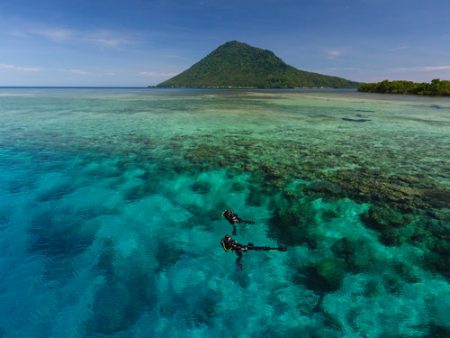August 16, 2018 – The threat of ocean acidification and climate change to coral reefs is well documented. Scientists are in a hurry to check on the health of corals around the world and artificial intelligence (AI) is playing its part. Off the coast of Sulawesi Island in Indonesia oceanographers have deployed underwater cameras to photograph the state of reefs. In the initial testing of the AI deep learning algorithms, up to 600 coral images were analyzed in a matter of seconds, something it would have taken scientists many hours.
From this small sample, the researchers refined the AI to measure 30 metrics from a larger sample of coral images, some 56,000 in fact. From this sample it is hoped that the AI will identify the health of other reef sites including two largest, Australia’s Great Barrier, and Central America’s Meso-American Reef.
The science team from the University of Queensland, funded by Paul Allen of Microsoft fame, has made some interesting observations including evidence that some reefs have bounced back from bleaching events. The findings may identify corals that can be cultivated to repopulate reefs elsewhere that are not showing recovery.
Dr. Emma Kennedy, from the University of Queensland, is somewhat encouraged to find resilient corals in the midst of so many bleaching events. She is quoted in a University of Queensland press release stating, “it means we still have time to save some coral reefs through the science-based targeting of conservation action.”
Why are coral reefs so important?
The reef systems of the world support more than 25% of all the life in the world’s oceans. Harvesting fish and other food sources from reef environments feed more than a half billion people and contribute $375 billion U.S. to the global economy.
What is the AI actually doing?
Using deep learning techniques the software detects patterns in the images it analyzes recognizing distinct coral species, invertebrates, different algae, and reef geography. Beginning with supervised learning in studying the first 600 images, the software has moved on to analyze the much larger data set of 56,000 images from an area of the ocean in Indonesia covering more than 3,850 square kilometers (1,487 square miles). Ultimately, the goal will be to generate image reports gathered from multiple sources that can then provide a comprehensive assessment of the state of coral reefs worldwide which can be shared in the cloud.
This will allow scientific teams to identify threat impacts and where human conservation intervention is most needed. Targeted investment in saving coral reefs will mean preservation of the ocean’s most ecologically significant regions.









